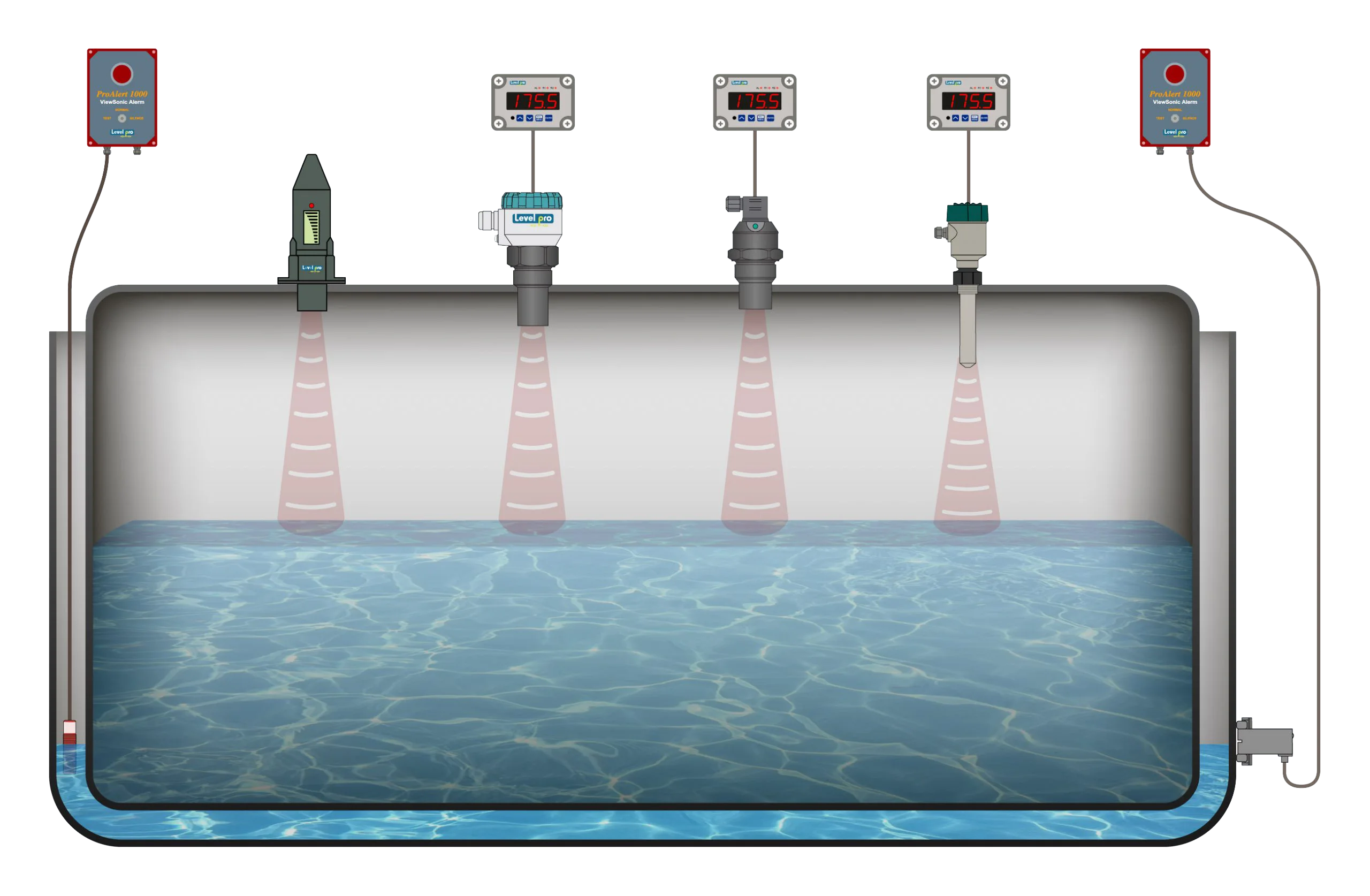Reasons why Ultrasonic Tank Levels Sensors Fail

There are several potential reasons why an ultrasonic tank level sensor may fail, including:
Noise- Ultrasonic tank level sensors work by emitting high-frequency sound pulses from the unit’s transducer. This signal travels at the speed of light and reflects off the surface of the liquid.
The time it takes for the tank level sensor to send and receive the sound pulse is referred to as the ‘time of flight’
Scum or debris that floats on the top of the liquid: If the fluid in the tank contains scum or debris or other foreign product, these may interfere with the operation of the sensor. The sound pulse does not reflect off many of these surfaces.
Temperature fluctuations: Ultrasonic tank level sensors may be sensitive to temperature fluctuations, and may not be able to provide accurate measurements if the temperature of the fluid in the tank changes significantly.
Vibration or shock: Ultrasonic tank level sensors may be sensitive to vibration or shock, and may not be able to provide accurate measurements if the sensor is subjected to excessive vibration or shock.
Foam: The sound pulse enters the foam, but in many cases gets trapped and does not return to the sensor transducer or measuring part of the tank level sensor
Sensor degradation: Over time, the sensor may degrade or wear out, which can result in inaccurate or unreliable measurements.
Condensate: Condensate, or water vapor that has condensed into a liquid, can absorb or reflect the energy of the ultrasonic signal, which can result in inaccurate or unreliable measurements.
Vapor: If the ultrasonic signal is traveling through a vapor, the signal may be absorbed, scattered, or reflected in unexpected ways, which can result in inaccurate or unreliable measurements.
Overall, there are a number of potential reasons why an ultrasonic tank-level sensor may fail. In order to ensure reliable and accurate measurements, it is important to properly maintain the sensor and ensure that it is operating within its specified temperature, vibration, and power supply range.
Learn more about level sensors
Please contact us to discuss your application


